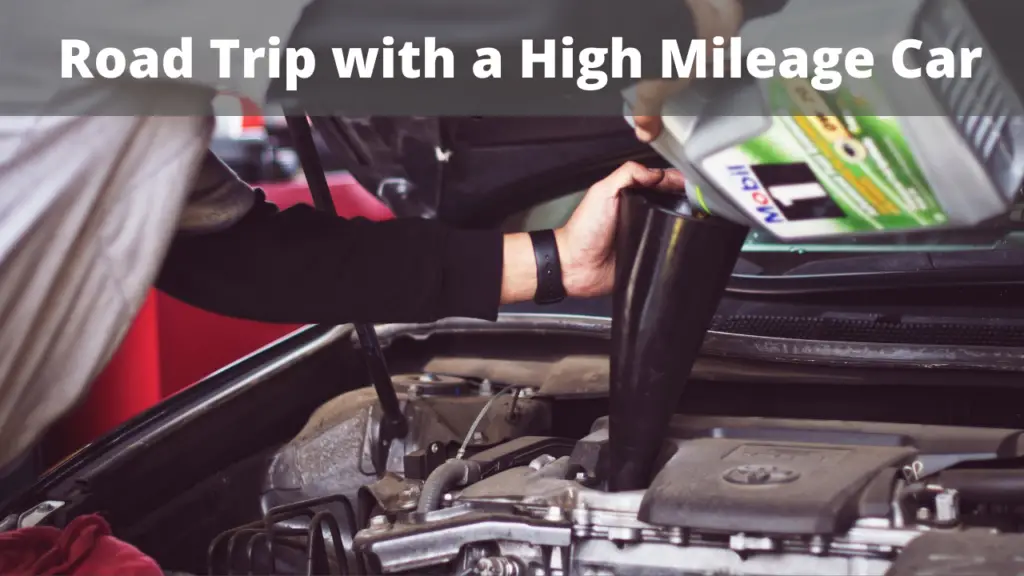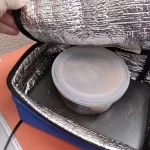Road trips are wonderful budget vacations. The first thing my husband and I always talk about is our car. Will it make it?
Properly maintained cars are safe to drive on a long road trip. Check the tires, fluids, battery, belts and lights before leaving on your trip and you can have confidence that you will not end up stranded. A high mileage car that has had regular maintenance is safe to take on a road trip.
The most common roadside emergencies are flat tires and dead batteries. These things can strand you on a vacation. New tires and batteries are inexpensive and help you ensure that you will have a great trip.
If you can afford tires, a battery and to keep the gas tank full, you can have a great road trip.
Take a look at your own car, have you been consistently getting oil changes, brake pad and rotor changes? Do you have any known issues? Has your car ever failed to start?

What do I need to check before a road trip?
The most important things to check are the tires and the battery. These are the things most likely to strand you on your trip.
If those things are good, go on to this more detailed list. This printable checklist will help you remember the points in this post.
This list of things can be checked at home or by a shop. If you start looking at things like fluids and batteries and you start to see some concerning things, bring it to the shop for them to take a deeper look.
Check over your car with the following list to be sure you feel comfortable taking your car on a long road tip.
Check Codes
Even if your dash does not show any codes, bring your car down to the auto part store and ask them to read any codes on your car. If you do not understand what all the codes mean you can ask the associate if they have time to explain it to you, or you can just go home and google it all.
Tires
Check all four tires on your car. You can use a quarter to measure the depth of the tread. Put a quarter upside down in the tire tread, you should not be able to see the top of George’s head.
Tires do not wear evenly, so be sure to check the tread on all four.
Also check the air pressure in the tires. You should check the tire pressure when the air in your tires is cold, so before you have driven the car. If you do not have a tire gauge, you can use the one on the free air at WaWa.
You can find the proper tire air pressure inside the door where you put gas in the car.
Fluids
You will want to check a few fluids in your car before a long trip. You may also want to carry extras with you on your trip.
Oil
Check the oil with the dipstick when the car is off and cool. Infrequent oil changes will not cause an engine to fail suddenly, it will shorten the overall life of the car.
You still want to be sure that your oil looks clean and that the level is within optimal operating range.
Coolant
Coolant will cause your engine to fail quickly. Be sure that the level is correct and be sure that it is not leaking. This is something you will want to carry with you on your trip, low coolant needs to be topped off as soon as possible.
Radiator
Once you have checked the coolant at the reservoir, you want to check the level in the radiator, you should see coolant right to the top of the radiator. Be sure to check this when the engine is cold and off.
Transmission Fluid
When you check the transmission fluid, you will find the most accurate reading when the engine is hot. The fluid should not be dark or smell burnt.
This is another fluid that you can top off yourself, just be sure to check any instructions in your vehicle’s owner’s manual.
Power Steering Fluid
The last fluid to check is power steering fluid. There is a dipstick for this just like for the oil. Again, the fluid should look clear and should show that it is within operating range.
If it is low, add more.
Leaks
If you notice any fluids under your car when you park, you should find out what is leaking.
The main fluids that can cause leaks are oil and coolant. Be sure to locate the reservoirs for these fluids and check the levels.
If possible, look under the car and see if you see anything dripping or wet looking. If you find leaks, head to the shop!
Condensation from the air conditioning is normal, but that is just water and should have no color or odor.
Belts
Most cars today have one belt, the serpentine belt. If this belt fails you will be stranded.
If a serpentine belt breaks you will suddenly lose power steering and your engine will begin to overheat. If your AC isn’t working, this may be a symptom of a serpentine belt about to fail.
Look for the belt, it has a ridged side and a smooth side, you should see no cracks or missing pieces in the belt. You may also heat squeaks or squeals in the front of the engine if the belt is rubbing.
If the belt looks at all compromised, you should have that repaired before attempting a long trip.
Check Battery
Battery failure will keep you stranded. Weak batteries have trouble getting a car to start, especially in the cold.
To check the batteries go to your local auto parts store and ask them to check the battery. They can check the health of the battery and give you recommendations.
Check the date on your battery. Most mechanics will recommend a new battery every three to five years. Batteries can last six or seven years in good conditions.
Also inspect the battery terminals. Corrosion on battery terminals can interrupt the connection of batteries to the car. This keeps the car from drawing power from the battery.
This can be easily cleaned with a brush (an old toothbrush works well) and gentle cleaner or baking soda and water.
Check Air FIlter
An air filter is an easy thing to check, take a look and replace if necessary.
Break Fluid
Check break fluid, it should have a dipstick like oil.
Lights
Burnt out lights are a great way to get pulled over out of state! Check all the lights at home before you hit the road:
- Headlights
- Brights or High Beams
- Turn Signals
- Break Lights
- Reverse Lights
- Running Lights
- Parking Lights
Most of the bulbs can be replaced without any tools.
Wiper blades
Check on your wiper blades, and replace any broken or stiff wiper blades.
Breaks
I left breaks for last because they are the most difficult to check at home. To really inspect your brakes you should remove the tires and potential the calliper.
I just bring my car to a mechanic, or my dad, to check the breaks. Leave it to the pros.
Some manufactures have embedded metal in brake pads that will start to make noise when the brake pad is worn down to the point of needing to be replaced, so if your brakes are making noise, they likely need to be replaced.
You may also need to replace rotors, but that cannot be evaluated well with all the tires on.
What to Bring On a Road Trip With an Older Car
So, if you are traveling with a high mileage car, keep a few emergency supplies in the trunk.
Please be careful if you are traveling with young kids as these chemicals are highly poisonous. Keep all lids tightened all the way and store them out of reach of your kids.
Be sure to get the correct fluids for your car:
- Coolant
- Oil
- Transmission Fluid
- Funnel
- Fire Extinguisher
You may also want to carry a ratchet set.
If necessary you can simply cut the top off a water bottle to use as a funnel in a pinch.
What’s considered high mileage for a car?
High mileage can mean two things, that the car is driven more than 12-15,000 per year may be considered high mileage or a car with more than 100-200,000 miles on the odometer. High mileage cars should be maintained religiously.
Cars that are driven for more miles may wear out more quickly, however many high mileage cars are driven primarily on the highway so the miles are less damaging to the car.
There are two tiers of mileage that matter to most people, over 100k miles and over 200k miles. A car with more than 100k miles is more likely to experience issues, but is still very reliable if regularly maintained with oil and other fluid changes.
I was surprised to learn that just a few years ago it was rare to see cars stay on the road after 150,000 miles, but odometers closer to 200,000 are much more common now.
This presents a challenge when buying used cars, older cars were not expected to or designed to drive into the 200k miles range.
How do I prepare a high-mileage car for a road trip?
High mileage cars should be checked before a trip, but if no known issues exist you can feel confident taking your high mileage car on a long trip. Tires and batteries are the most common roadside emergency, so be sure to check those things well.
This checklist covers the basics. A mechanic can check these things or you can do them at home.
Is my car too old for a road trip?
The average driver puts about 12,000 miles a year on their car. With this number in mind, you can expect your car to last about 12 years. If your car has fewer miles, has been excellently maintained or is a high end model it can last well past 12 years.
If your car is more than 12 years old and has more than 200k miles you will want to do a thorough inspection to be sure it is safe to drive. Be sure to inspect the tires and have the battery tested. Tires and batteries are the problems most likely to leave you stranded far from home.
A car with a current inspection and no known issues is safe to drive on a long trip.
Cars that are driven fewer miles, but driven regularly can last longer if maintenance is done regularly. Cars that sit for years without being driven do not last longer. Mice can ruin electricity, tires can rot and fluids pool.





